It is important to have a plan. You have to have organized yourself to know what your goal is, and how you are going to go about accomplishing it so you don't waste time, energy or money. Planning ahead is the key to efficiency.
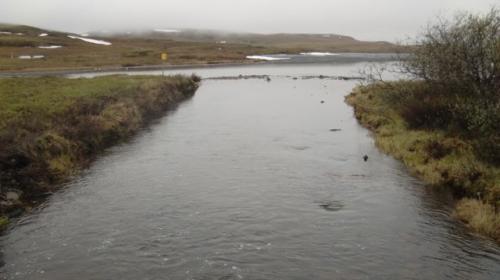
However, plans change. Weather happens. People get sick. Opportunities arise. Organisms don't behave the way you think they should. You have to be flexible. You have to be ready to shift, evolve and change as the conditions do.
This is true not only in field research where there are countless variables and factors to consider, but also in the lab and in your daily life.
Plan A
Today we planned and been scheduled months ahead to have time in the helicopter to fly out to a nearby lake called Wolverine Lake. We were going to go and collect the first set of samples for the year to get an early year data set. That was the plan.
We woke up this morning to another very foggy and socked in day. The helicopter can't fly with poor visibility and thus our plans had to evolve. We waited a couple of hours, working in the lab catching up on emails and such, hoping that the fog would lift or burn off. A couple of hours passed and the helo coordinator, Nancy, stopped by to say they were still not flying. The PIs scratched their heads and starting referencing their plan Bs.
Byron received an email from another researcher, Phaedra, who is studying the fish populations in various lakes (aka Team Char), saying that they were scraping their plans for Wolverine and were going to instead drive up the road to the Fog Lakes, which are walking distance from the road. She was going to collect her samples, and she knew from previous discussion and familiarity with our project that we were also going to collect samples from these lakes at some point in the season. She offered to collect samples for us and bring them back.
Plan B
In the meantime while we were waiting to see if the fog lifted and if the helicopters were going to fly Byron decided to take Sarah and I down the boardwalk to Toolik inlet to show us some of the sampling that takes place there.
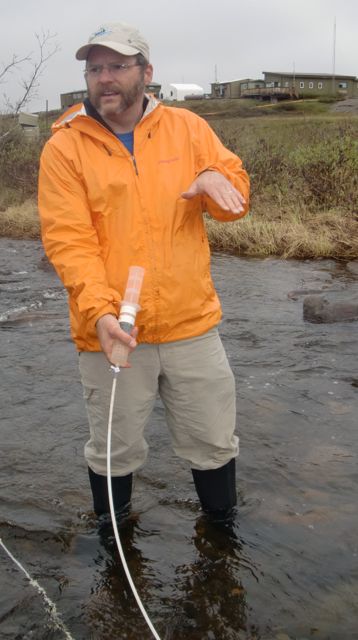
We checked out the hyporheic water, or as Byron says, the water in the stream below the stream. This is the water that flows through the sediments below the stream bed. It is slower moving water, that is full of microbes and other nutrients and organic material. There is a tube that is pounded into the stream bed about half a meter, it has a screen on the end, and we wade out to the tube with a syringe and can suck up water that come from the hyporheic zone. This is part of the stream series sampling- a sampling that will happen after I have left Toolik.
We returned to check in with the helicopter as the fog seemed to be lifting- hope! We were so hopeful that the pilot went out to drop off another group and do some scouting of the area we were heading to. The group that was heading to Wolverine Lake went through the FAA safety briefing (seat belts, exiting/entering, in case of emergency, etc.) just to save time if we received the signal to go... which unfortunately never came.
The Day is Not Lost!

Not to be dismayed, we were itching to get outside. Byron loaded us into the beluga (our big white pick up) and drove us to the Fog Lakes down the road where Phaedra (Team Char) were collecting some samples for us. As we neared the Fog Lakes we could agree that they certainly lived up to their names. Even with the fog and drizzle they were beautiful. Covered in melting candle ice, and surrounded by some lovely rolling hills and ridges.

It was so fun to get out onto the tundra and see the wildflowers coming into bloom, feel the spongy tussocks (cotton grass) and just see what it was like. Regina- another PolarTREC teacher- came with us, we were like kids in a candy store snapping pictures and checking out everything.
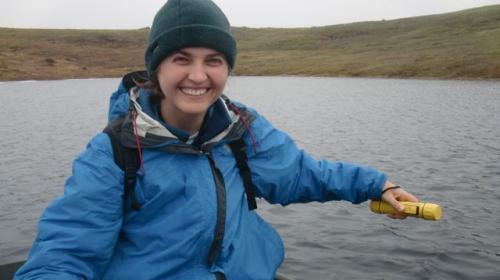

We did end up running into Team Char as they were heading to collect our final samples. We headed out into the boat with them on one of the Fog Lakes and retrieved water from three different depths.
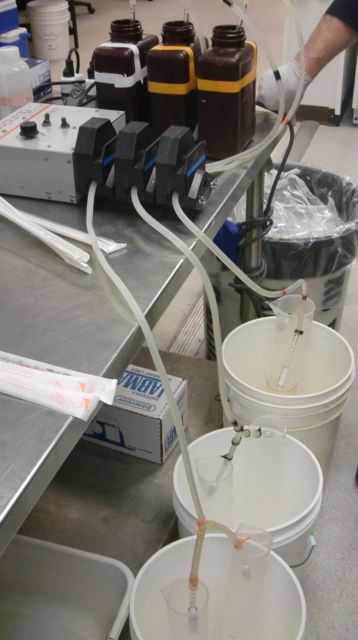
This water was brought back to our lab and we learned how to filter in order to collect the microbes and separate them from the water so that we could perform a DNA extraction in the future. I will further explain what we actually do in the lab in another journal.
All in all, while our first plan didn't work out, we revised and still had a productive afternoon.
Species Journal
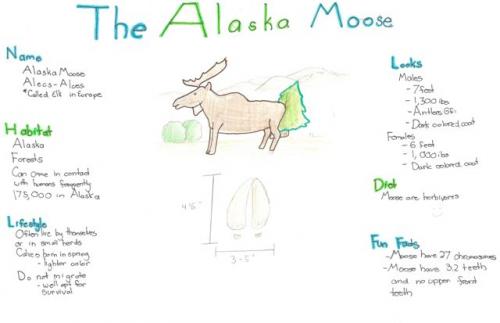
Today we again saw the arctic ground squirrel, a raven, and the only other bird we could identify for certain was the white crowned sparrow.

At dinner I spoke with two gentlemen who were up here for a couple of days performing a survey of the birds that were found along the Dalton Highway at various locations and times. They mentioned that they had performed these surveys for around 20 years and one felt that he was starting to see the white crowned sparrow moving further north. An un-official observation, but interesting nevertheless.


Comments